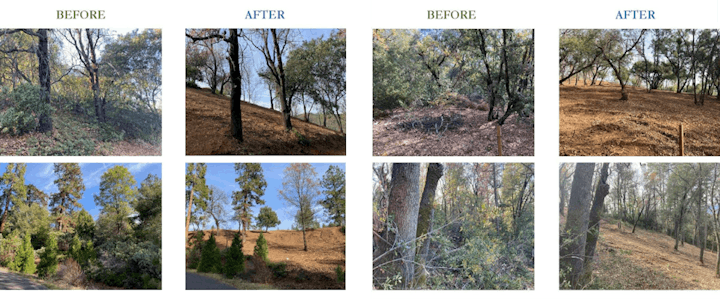NW Calaveras Fuels Reduction Project
The northwestern portion of Calaveras County, in a large part, has become a bedroom
community for eastern San Joaquin and Stanislaus County. Large residential communities have sprung up in these foothill habitats, beginning in the late 1970’s and early 1980’s. The hilly topography gives desired relief to the layout of residential subdivisions that have been broken up into .25 to 1.5-acre house lots. According to fire statistics in Calaveras County, more ignitions and fires happen in this section of County than any other. This statistic is alarming.
This project would actively treat 470 acres (TIZ) within a 3,080 acre footprint. On this 3,000+ acre footprint, it is planned to accomplish a CEQA ERRF document so that future grants can utilize this information, which will streamline the environmental compliance process. The 470 acres of treatment area is characterized by a mixed chaparral habitat (MCH habitat type, identified by the California Wildlife Habitat Relationship- "CWHR" system), dominated by buckbrush ceonothus, toyon, and chamise. The overstory is predominantly blue oak.
Since fires are stopped as soon as possible in this area, many stands of chaparral that is targeted in this proposal are decadent, and in need of treatment, preferably without the influence of fire. Mixed chaparral in California is a fireadapted community. Fire is a natural process within this regime. Adjacent to the TIZ and a part of the Project Influence Zone (PIZ) is the subdivision Rancho Calaveras, which has 1,937 households and a population
(according to 2010 Census) of 5,316 persons.
Project Cost $2,348,773.28




